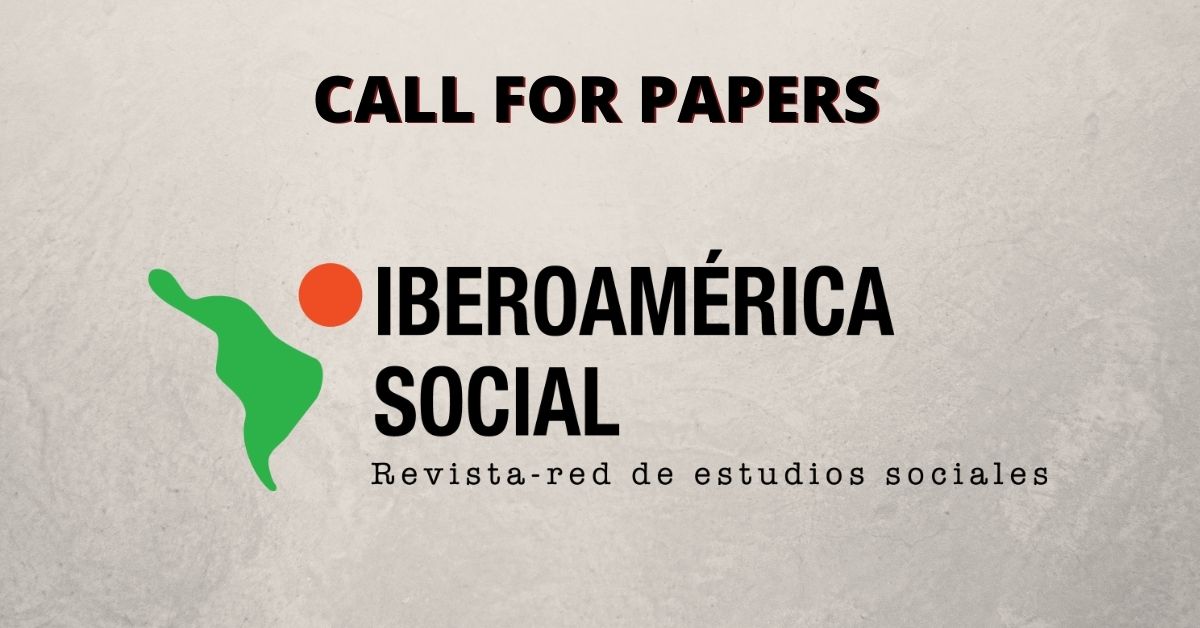Cadenas formales de cuidado. Un esquema para describir la creación y transferencia de bienes y servicios por parte de entidades del tercer sector.
Resumen
El presente trabajo aborda el fenómeno del cuidado desde una de sus expresiones específica y formal, a saber, las acciones gratuitas o casi gratuitas que se emprenden para ayudar a terceros en el marco de organizaciones de la sociedad civil. Pretende identificar y describir lo que llama cadenas formales de cuidado, concepto heurístico acuñado para entender el proceso de conexión entre agentes, estructuras y mecanismos que da como resultado la provisión de cuidados gratuitos o casi gratuitos. Basado en la aproximación de Pranab Chatterjee sobre el bienestar, se busca con la descripción de este proceso superar la visión individualizante y psicologicista que prevalece a menudo sobre este tipo de acciones de cuidado.
Descargas
Citas
Butcher, Jacqueline (2008). México solidario. Participación ciudadana y voluntariado. Limusa. México.
Cagney, Penelope y Ross, Bernard (2013). Global fundraising: how the world changing rules of philanthropy. Wiley. New York.
Chatterjee, Pranab (1996). Approaches to the welfare state. NASW press. Washington.
Clotfelter, Charles T. (1992). Who benefits from the nonprofit sector? The University of Chicago Press. Chicago.
De la Cuesta, Carmen Benjumea (2009). “El cuidado familiar: una revision crítica”. Investigación y educación en enfermería. Vol. XXVII, no. 1, marzo, 96-102
Dietzenbacher, Erik y Romero, Isidoro (2007). “Production Chains in an Interregional Framework: identification by Means of Average Propagation Lengths”. International Regional Science Review, Vol. 30, No. 4, 362-383
Gereffi, Gary; Humphrey, John; Kaplinsk, Raphael y Sturgeon, Timothy (2001). Introduction: Globalisation, Value Chains and Development. Institute of Development Studies, IDS Bulletin 32.3.
Glenn, Evelyn Nakano (2010). Forced to care: coercion and caregiving in America. Harvard University Press. Cambridge.
Hammack, David (2005). “Donors, intermediaries, and beneficiaries: the changing moral dynamics of American nonprofit organizations”. En: Smith David H. Good intentions. Moral obstacles and opportunities. Indiana University Press. Bloomington.
Hansmann, Henry B. (1980). “The role of nonprofit enterprise”. The Yale Law Journal. Volumen 89, no. 5.
Havens, John J.; Herlihy, Mary A.; Schervish, Paul G. Charitable giving: how much, by shom, to what, and how? (2006). En: Powell, Walter y Steinberg, Richard. The nonprofit sector. A handbook research. Yale University Press. New Haven.
Hochschild, Anne Russel (2001). “Cadenas globales de afecto”. En Giddens, Anthony y Hutton, Will. En el límite. La vida en el capitalismo global. Tusquets. Barcelona.
Inglehart, Ronald (2003). Human values and social change. Findings from the value surveys. Brill, Leiden.
Layton, Michael D. (2006). “La generosidad en México: ¿quién da? ¿a qué? Discusión de los resultados de la Encuesta Nacional sobre Filantropía y Sociedad Civil”. Presentación realizada en el VIII Encuentro Iberoamericano del Tercer Sector en México.
Mandell, Betty Reid (2010). The crisis of caregiving: social welfare policy in the United States. Palgrave. New York.
Musick, Marc y Wilson, John (2008). Volunteers. A social profile. Indiana University Press. Bloomington.
Porter, Michael (1991). La ventaja competitiva de las naciones. Javier Vergara Editor. Buenos Aires.
Putnam, Robert D. (2002) Solo en la bolera. Colapso y resurgimiento de la comunidad americana. Galaxia Gutenberg- Círculo de lectores. Barcelona.
Ramírez, Jorge Plascencia (2013). Organizaciones no lucrativas y voluntariado en México. Guadalajara. Universidad de Guadalajara.
Sadler, Ian (2007). Logistics and Supply Chain Integration. Thousand Oaks: Sage.
Salamon, Lester M. (1995). Partners in public service. Government-nonprofit relations in the modern welfare state. The John Hopkins University Press. Baltimore.
Salkever, David S. y Frank, Richard (2006). “Health Services”. En: Clotfelter (2006).
Schabbel, Christina (2007). The Value Chain of Foreign Aid. Heidelberg: Physica-Verlag.
Schwartz, Saul y Baum, Sandy (2006). “Education”. En Clotfelter (2006).
Szinovacz, Maximilien y Davey, Adam (2008). Caregiving contexts: cultural, familial, and societal implications. Springer. New York.
Talley, Ronda C. y Crews, John (2012). Multiple dimensions of caregiving and disability. Springer New York.
Tobío, Constanza (2012). “Cuidado e identidad de género. De las madres que trabajan a los padres que cuidan”. Revista Internacional de Sociología. Vol. 70, no.2, mayo-agosto, 399-422.
Twigg, Julia (2000). Bathing- the body and community care. Routledge. New York.
Twigg, Julia; Wolkowitz, Carol; Cohen, Rachel Lara y Nettleron, Sarah (2011). Body work in health and social care. Wiley-Blackwell. Malden
Weisbrod, Burton A. (1998). To profit or not profit. The commercial transformation of the nonprofit sector. Cambridge University Press. New York.
Wilson, John y Musick, Marc (1998). “The Contribution of Social Resources to Volunteering”. Social Science Quarterly (University of Texas Press), Dec, Vol. 79 Issue 4, 799-814.
Publicado
Cómo citar
Número
Sección
Licencia
Derechos de autor 2014 Iberoamérica Social: Revista-red de estudios sociales

Esta obra está bajo una licencia internacional Creative Commons Atribución-NoComercial 4.0.






